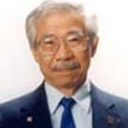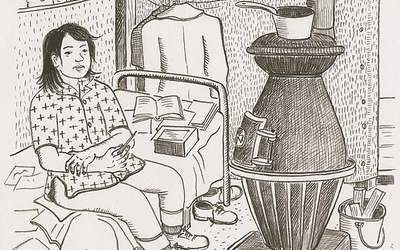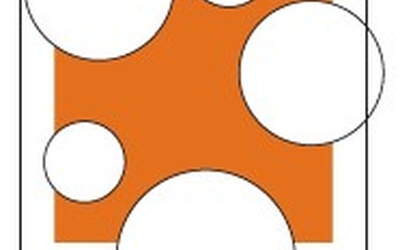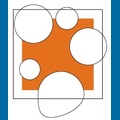
James A. Hirabayashi
James Aikira Hirabayashi (1926-2012) tuvo una distinguida carrera académica de treinta años en la Universidad Estatal de San Francisco, que incluyó el puesto de Decano de Estudios Universitarios y Decano de Estudios Étnicos. En este último puesto, se le reconoce por su liderazgo pionero en el establecimiento de la primera Escuela (ahora Facultad) de Estudios Étnicos del país. También ocupó puestos de investigación y docencia en la Universidad de Tokio, Japón, y la Universidad de Zaria, Nigeria, África. A lo largo de su carrera, el Dr. Hirabayashi también brindó orientación y dirección a los programas educativos y curatoriales del Museo Nacional Japonés Americano, que incluían sus colecciones, exposiciones, programas de educación pública, películas e investigaciones.
Actualizado en agosto de 2018
Historias de Este Autor
Detrás del alambre de púas – Parte 2
6 de septiembre de 2018 • Lane Ryo Hirabayashi , James A. Hirabayashi
Leer Parte 1 >> EL ESTALLIDO DE LA GUERRA me despido a los rostros de mis hijos dormidos Mientras soy hecho prisionero En la fría noche de lluvia — M.Ozaki 1 En 1941 había 158.000 personas de ascendencia japonesa viviendo en Hawaii, el 37 por ciento de la población. En California vivían noventa y cuatro mil personas, pero constituían sólo el uno por ciento de la población. 2 Había 25.000 en los estados de Washington y Oregón, con un total …
Detrás del alambre de púas – Parte 1
5 de septiembre de 2018 • Lane Ryo Hirabayashi , James A. Hirabayashi
Nota del editor: Las palabras y frases utilizadas para describir la historia japonés-estadounidense varían considerablemente entre los académicos, los funcionarios gubernamentales e incluso aquellos directamente afectados por la Orden Ejecutiva 9066: “reubicaciones, “evacuación”, “encarcelamiento”, “internamiento”, “campo de concentración”. No existe un acuerdo general sobre qué es más exacto o justo. En 1994, se desató un debate en torno a la cuestión de la terminología cuando el Museo Nacional Japonés Americano inauguró la exposición, Campos de concentración de Estados Unidos: recordando …
Four Hirabayashi Cousins: A Question of Identity - Part 5 of 5
14 de junio de 2008 • James A. Hirabayashi
Part 4 >>Henry (Hank) Nobuo HirabayashiHank Nobuo Hirabayashi was born in Seattle on April 29, 1923. His father, Hamao, appears in many early photographs taken during the first decade of the 1900s with his bachelor cousins and friends. He was one of the earliest to emigrate and urged his cousins to join him. The families were to maintain close relationships throughout the pre-war years. Beginning in a day job in a hotel in Tacoma, Hamao saved his money and eventually …
Four Hirabayashi Cousins: A Question of Identity - Part 4 of 5
7 de junio de 2008 • James A. Hirabayashi
Part 3 >>Robert (Bob) Taro MizukamiBob Taro Mizukami was born in 1922 in Star Lake in the hills above Kent, Washington. His mother, Isami, was the youngest sister of Gordon’s father, Shungo, and attended the academy Kensei Gijuku, before emigrating to America. Gordon’s mother, Mitsu, served as an informal “go-between” in his parents’ betrothal. Raised during the Depression, it seemed to Bob that the family was moving almost once a year. The Mizukamis lived and farmed in Thomas right next …
Four Hirabayashi Cousins: A Question of Identity - Part 3 of 5
31 de mayo de 2008 • James A. Hirabayashi
Part 2 >>Gordon Kiyoshi HirabayashiGordon Kiyoshi Hirabayashi’s father, Shungo, together with Grant’s father, Toshiharu, formed the core of the Thomas Mukyokai fellowship. Gordon was born in 1918 in Seattle, but his earliest memories are of living on the farm in Thomas, Washington, next door to his cousin Grant. The family moved to Seattle one winter to escape from the hard farm life, but returned to try farming again at the urging of the Mukyokai group. Gordon’s mother, Mitsu, was concerned …
Four Hirabayashi Cousins: A Question of Identity - Part 2 of 5
24 de mayo de 2008 • James A. Hirabayashi
Part 1 >>Grant Jiro HirabayashiGrant Jiro Hirabayashi was born in November 1919. He was named after the Rev. Ulysses Grant Murphy, a Methodist minister and former missionary to Japan who befriended the Mukyokai group. Grant’s father, Toshiharu, was considered the most knowledgeable among the Mukyokai fellowship, since he had attended academy in Hotaka longer than any of the others. Grant’s early religious exposure came from his family setting: “My parents made sure we went to church. I had at least …
Four Hirabayashi Cousins: A Question of Identity - Part 1 of 5
17 de mayo de 2008 • James A. Hirabayashi
The sudden onset of World War II on December 7, 1941, thrust the issue of identity to the forefront for all Japanese Americans. On February 19, 1942, President Franklin D. Roosevelt signed Executive Order 9066 authorizing the War Department to prescribe military areas from which any or all persons might be excluded. This order served as the basis for Lt. Gen. John L. DeWitt to issue the curfew and exclusion orders. Public Proclamation No. 3 established a curfew from 8:00 …
“Concentration Camp” or “Relocation Center” - What’s in a Name?
24 de abril de 2008 • James A. Hirabayashi
It was almost 20 years ago when I read an article by Dexter Waugh in the San Francisco Examiner titled “Semantic debates on war camps” (May 7, 1976). The issue revolved around the use of terminology on a plaque commemorating Tule Lake as a state historic landmark. At the time I exchanged several letters with the chair of the State Historical Resources Commission, a fellow anthropologist, who voted against the use of the term “concentration camp”, saying that he did …





